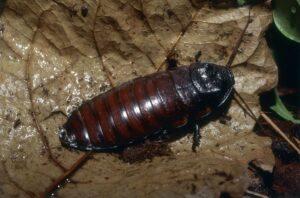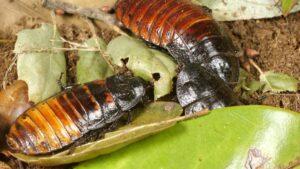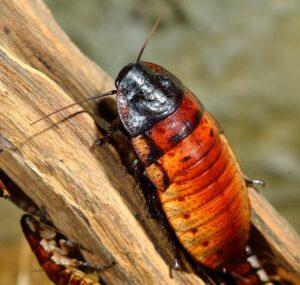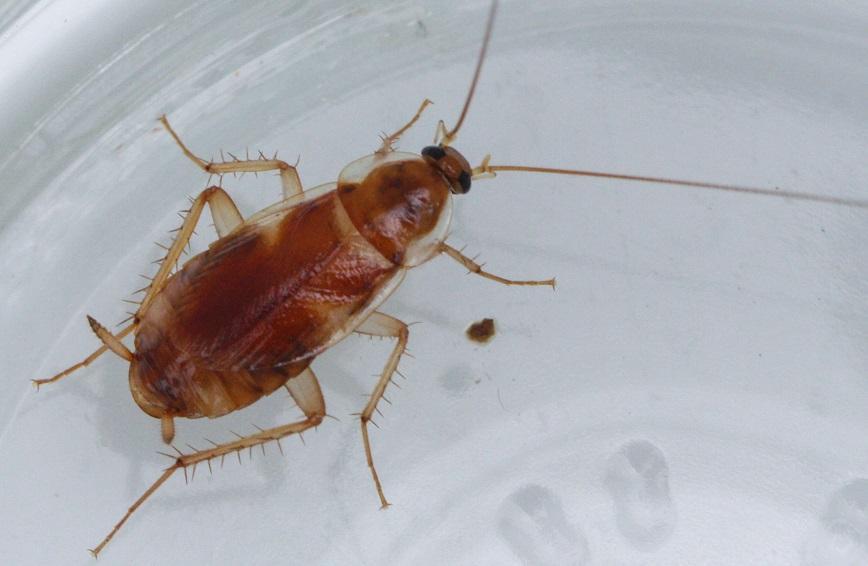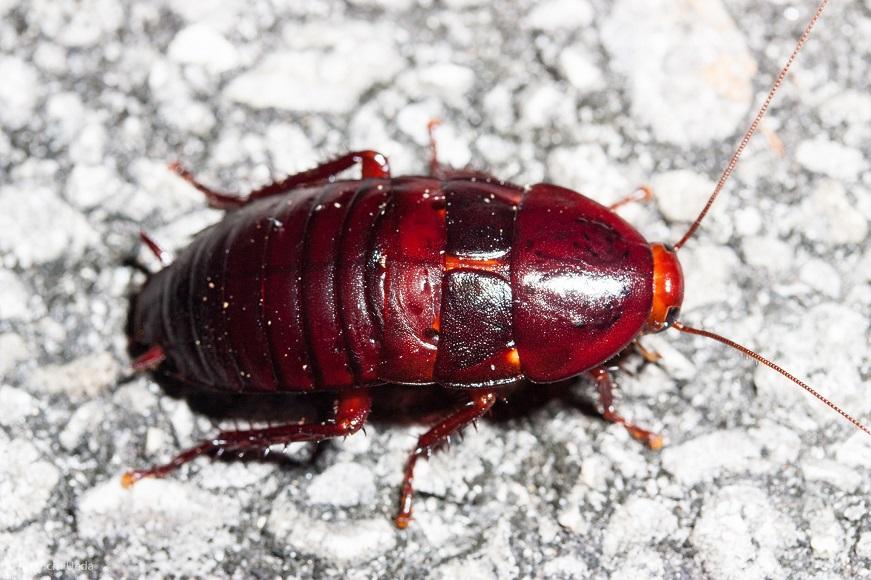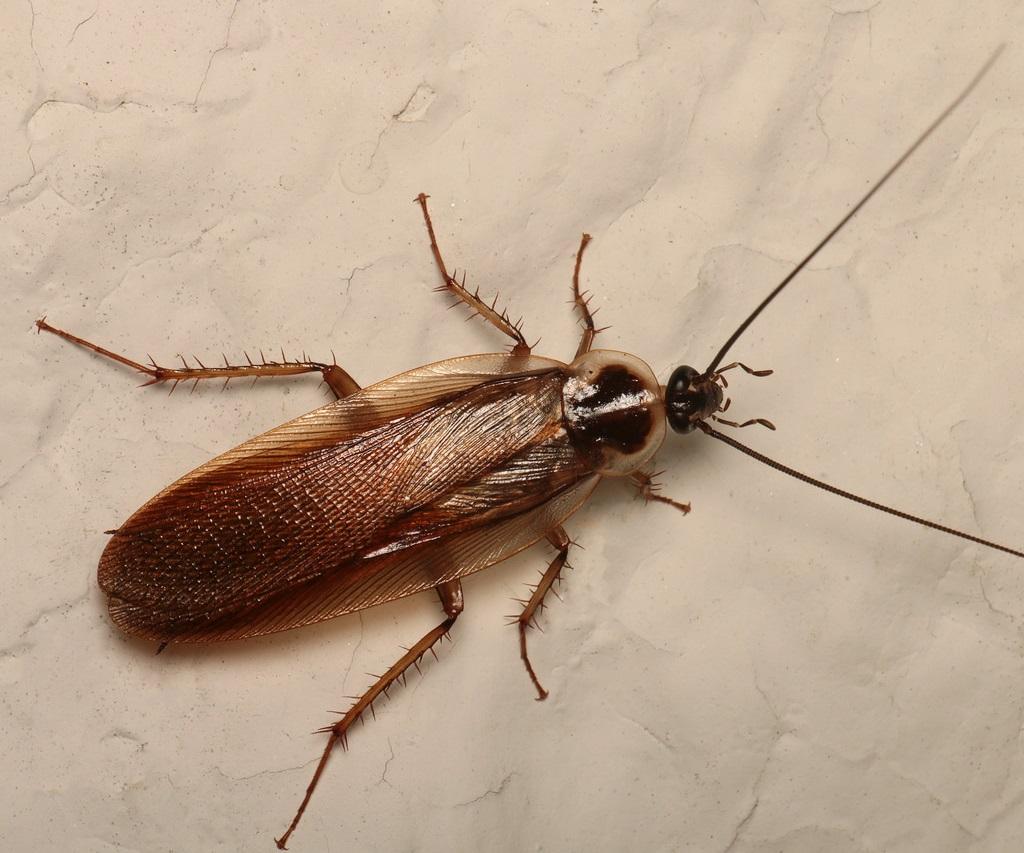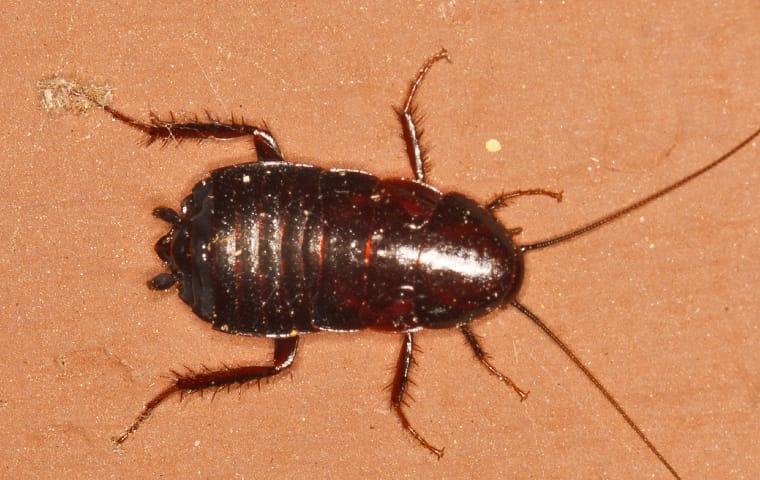Madagascar Hissing Cockroach (Gromphadorhina portentosa)
Updated on
17/11/2022Madagascar hissing cockroaches, also called hisser or hissing cockroach, is endemic to Madagascar. It is also called hisser or hissing cockroach due to the hissing sound it produces. Its large size and tameness make it a sought-after pet.
They featured in several Hollywood moves like the 1975 horror film Bug, presented as roaches capable of setting fire using their legs by rubbing them together. They even appeared in the 1997-American movie Men in Black. In 2006 the Six Flags Great America amusement park granted unlimited line-jumping privileges to anyone who ate the Madagascar hissing cockroach alive. This was a part of the Fright Fest program celebrated on Halloween. In another exciting event at the Bronx Zoo held since 2011, a roach-naming program was organized, where benefactors could name the hissers living there.
Scientific Classification
- Class:Insecta
- Order:Blattodea
- Family:Blaberidae
- Genus:Gromphadorhina
- Species:G. portentosa
Conservation Status
Description
They are 2-3 inches (5-7.5 cm) long with a black or dark brown pronotum and head and brown abdomen. The males and females differ in physical appearance and size. The males have thick, hairy antennae and pronounced horns on their pronotum, often confused for eyes. On the other hand, the females have smooth antennae and small bumps on their backs. The males are also shorter and lighter than the females. Wings are absent in both sexes.
Distribution: Madagascar
Habitat: On forest floors among rotting logs and leaf litter and areas adjacent to riverbanks
Do they bite: No
Lifespan: Around 5 years in captivity
Predator: Tenrecs, ants, birds, spiders
Behavior and Characteristics
Hissing
The hissing sound is produced by forcefully expelling air through the spiracles or breathing tubes on the fourth abdominal segment.
The three forms of hiss include the disturbance hiss, aggressive hiss, and female-attracting hiss. All adult males and females produce the disturbance hiss, and older nymphs (crossing the fourth instar stage) when disturbed or handled inappropriately. The disturbing hiss was regarded as an anti-predatory response as a survival strategy.
However, studies present an analysis against this notion. The fighting and female-attracting hisses are used by males during challenging other males and courtship. During a male-male interaction, the winner hisses more than the loser. Males can discriminate between the hisses of other males belonging to their community and that of outsiders.
Social behavior
Males mostly indulge in protecting their territories and fighting with other males during the courtship period to seek mates. The gregarious females don’t fight.
Locomotion
They are great climbers able to move up smooth surfaces like glass. These cockroaches are good at running, too, at 3 mph.
Association with mites
Gromphadorholaelaps schaeferi, a mite species, lives on the Madagascar hissing cockroach on the base and undersides of their legs. It doesn’t harm the cockroach; instead, it helps remove the food debris from their body preventing chances of fungal infection. Studies show the role played by the mite in prolonging the lifespan of its host (the Madagascar cockroach)
Life Cycle
Egg Stage
Maternal care displayed by the females is one of the unique traits of these cockroaches. Like other roaches, the eggs remain inside the ootheca or leathery case. The case remains inside the female’s body till the eggs hatch.
Nymph Stage
The neonate nymphs remain inside the female’s abdomen for 30-40 days till they reach the first instar. They go through six molts and mature in 7 -12 months. They lack wings like the adults. The nymphs crossing the fourth instar stage can produce a hissing sound.
Adult Stage
In the final stage of the molt, the nymphs reach sexual maturity. The adults, however, never molt.
Pet Care Sheet
These cockroaches are easy to maintain and have a timid demeanor that makes them exotic pets. They need a small, dark, and warm place to live and don’t do well in well-lit and cold dwellings.
Enclosure type: Fish tanks, 5-10 gallons in size with a screen, are preferred to accommodate around 5 roaches. Glass or transparent plastic screens help monitor their behavior well. Make sure to add a lid to the tank to prevent them from escaping. Coating the top with petroleum jelly is another way to keep them safe in the enclosure. Adding a wire mesh or wood block to the tank would allow these cockroaches to climb to the sides, something they do in their wild habitat.
Temperature: The preferred temperature is from 72°F to 75 °F.
Bedding: Keep wire shavings on the floor of the tank. Changing the bedding periodically, especially when the humidity level increases.
Feeding: You can give them fresh vegetables and fruits like carrots, banana peels, orange slices, apples, potato slices, sweet potato peelings, and grapes. They even feed on protein-rich pellet foods like dry dog food.
Some U.S states like Florida require a special permit to keep these roaches in breeding colonies or as pets. The Department of Entomology and Nematology allows only male roaches to leave the laboratory. The reason is to prevent the introduction of pregnant females into the environment.
FAQs
A. The pregnant cockroaches are larger with distended abdomen and display slow movements. Their gestation period could last around 2 months when kept in a laboratory.
They may cost as low as 5 dollars each.
After each molting process, their hard exoskeleton is shed. During that time, their skin has a soft texture and appears white. At that time, one look at the roach might seem that they have an albino body. It takes many hours for the new exoskeleton to acquire a darker coloration and harden.
They are not dangerous to humans. The male cockroaches show aggression while fighting with other males in their community.
Source
arachnoboards.com, animaldiversity.org, cdn.kqed.org, critterfacts.com, familyhandyman.com, earthtouchnews.com, cdn.shopify.com,




